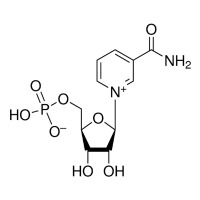Are you suggesting I wash out for a week, get blood work done, then take NR, get blood work done, then take apigenin with the NR and get blood work done again to gets pre NR, post NR and post Apigenin levels of NAD? Has anyone here done this for NR?
Since starting Apigenin with NR two days ago I do feel I have even more energy than I had with just the NR. I'm not sure if that's placebo or what. That aside, apigenin is also said to be an aromatase inhibitor which sounds good to me as I'd definitely like to boost my testosterone levels.
The entire topic of whether something is beneficial is in my view really difficult. Personally I have concluded that I can probably do regime changes every 2-3 months if I want to conclude anything. Short term effects like more or less energy I am not taking too serious anymore. So I watch:
- memory recall. How welll can I remember numbers for a short time. For work I regularly dial into conference calls with 9 digit ID codes, so do I remember better or not...either I dial wrong or right after looking at the number couple times.
- physical appearence. I have a pretty standard gym routine so is my body changing more or less
- hair. My hairline is on a slow recovery. Does it stay on track or stall
- eyesight. This has improved but still intermittent. I suspect lens stiffening cannot be easily overcome...
- skin, the ultimate challenge in my view. ECM in the face, wrinkless, elasticity
But all of those will only show changes in longer term. Just as example skin epidermal cells renew every 15-30 days. So if you want to see impact for example from epigenetic changes my guess is you would need couple months before something becomes visible. I have noticed people make fast changes to regimes but the body renewal doesn't go that fast in my opinion.
Personally I am very satisfied with NR, but I have added some polyphenols on the hypothesis to tamp inflammation for example. I have added those over time. It is not easy to say what each item does but I am fairly sure that the combination work. Of course each person in different and I am also convinced that other factors like the amount you eat and the exercise you do are other critical components. Exercise activates 100s of genes for example. Anyways I am 46 years old and last week I got offered a student card for a nightclub :-) that would not have happened 1-2 years ago so yeah I am not in a hurry to tweak my CD38s....I go for long and slow improvement just like aging which is long and slow but then resversed.
This is all very good info. I've not changed my regimen much in the last 40-45 days since I began NR. I plan to stick with this beyond another 60 days for sure. Those are good markers to keep track of. I've been watching skin over the past 30 days now. I've not seen much yet but I'm holding out for a few months like you say before deciding what works. I have been exercising for at least 30 mins at target heart rate (161) four times a week for quite a while now.
I'm learning that apigenin has a very long half life of 91 hours according to most reliable sources. I may end up reducing the dose back to once a week at that rate. It's got a sedative effect in higher amounts and I'm feeling it today, so I'll be skipping it. Some sources I linked above say that food bound apigenin is more stable. There's no telling how much of it is required to reduce CD38, your diet may include it Stefan, but mine probably doesn't. I haven't been eating oranges, celery, grapefruit or any of the food sources listed except perhaps a small amount of onion with other foods on occasion. I eat a lot of apples, bananas, strawberries and blueberries but it's not in those. I hate grapefruit and while I might add oranges back into my diet I may just stick with chamomile tea instead of taking the supplement. I will let everyone know if this speeds things up in terms of reversing age in any way.
Edited by Nate-2004, 23 June 2016 - 02:57 PM.
































 This topic is locked
This topic is locked





























